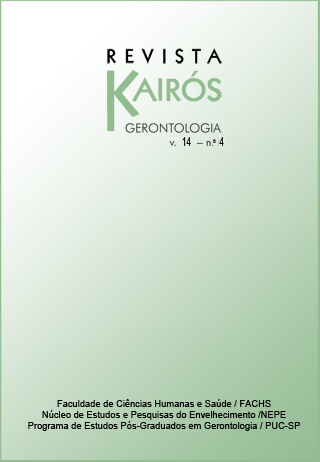Comparação da força muscular respiratória entre idosos sedentários e ativos: estudo transversal
DOI:
https://doi.org/10.23925/2176-901X.2011v14i4p107-121Palavras-chave:
Envelhecimento, Força Muscular Respiratória, Atividade Física.Resumo
O envelhecimento gera diminuição da força muscular respiratória e a atividade física pode minimizar esse efeito. O objetivo deste estudo foi analisar se a força da musculatura respiratória de idosos sedentários difere daquela dos ativos. A amostra foi composta por 16 idosos, divididos em grupo ativo e inativo. Foram verificadas a pressão inspiratória máxima (PImáx) e a pressão expiratória máxima (PEmáx). O grupo ativo apresentou valores maiores. Concluímos que a atividade física reduziu as perdas de força muscular respiratória no grupo estudado.
Downloads
Como Citar
Santos, T. C. dos, & Travensolo, C. de F. (2012). Comparação da força muscular respiratória entre idosos sedentários e ativos: estudo transversal. Revista Kairós-Gerontologia, 14(4), 107–121. https://doi.org/10.23925/2176-901X.2011v14i4p107-121
Edição
Seção
Artigos


